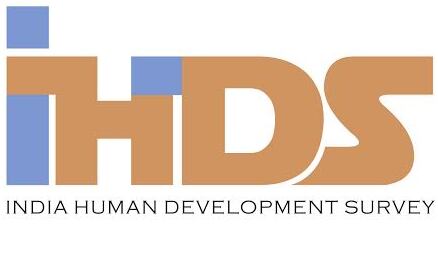Merging Files
Merging Waves of IHDS Data
Please note: ICPSR now has available a data file with both waves. Download here.
Merging the household and individual files should be easy. Sort both by STATEID DISTID PSUID HHID HHSPLITID (or by IDHH which is the 9-digit equivalent) and merge or link using those sort variables. There are no household records without at least one individual record and no individual records without a household record. There are no direct linkages between the primary school file or the medical facility file and the household or individual files. A user can aggregate these school and medical facility files to the PSUID or DISTID level and integrate them with the household surveys to investigate the educational and medical context of the household.
The nonresident file can be appended to the individual file and sorted by STATEID DISTID PSUID HHID HSPLITID PERSONID. (The nonresident PERSONID ranges from 50-54, beyond the range of the household members.). We recommend renaming NR5 to RO3 (sex), NR6 to RO5 (age), NR7 to RO6 (marital status), and NR10 to ED5 (years of education).
The birth history file can be merged with the household file to add information about the household and the birth mother (the eligible woman variables EW3-EW9). Both files should be sorted by STATEID DISTID PSUID HHID HHSPLITID before merging. 10,482 households have no birth history records. All birth history records will be matched to a household record, but there will be 270 birth history records from 57 households for whom the eligible woman is not identified on the household file (EW3 is missing). The merged birth history and household file can be merged with the individual file by creating PERSONID=EW3, sorting by STATEID DISTID PSUID HHID HHSPLITID PERSONID, then merging on those variables with the individual file. The 270 birth history records with missing EW3 will not merge with any individual records. There will be 184,739 individual records that will not merge with any birth history records (because these individuals are not the eligible women who were interviewed).
